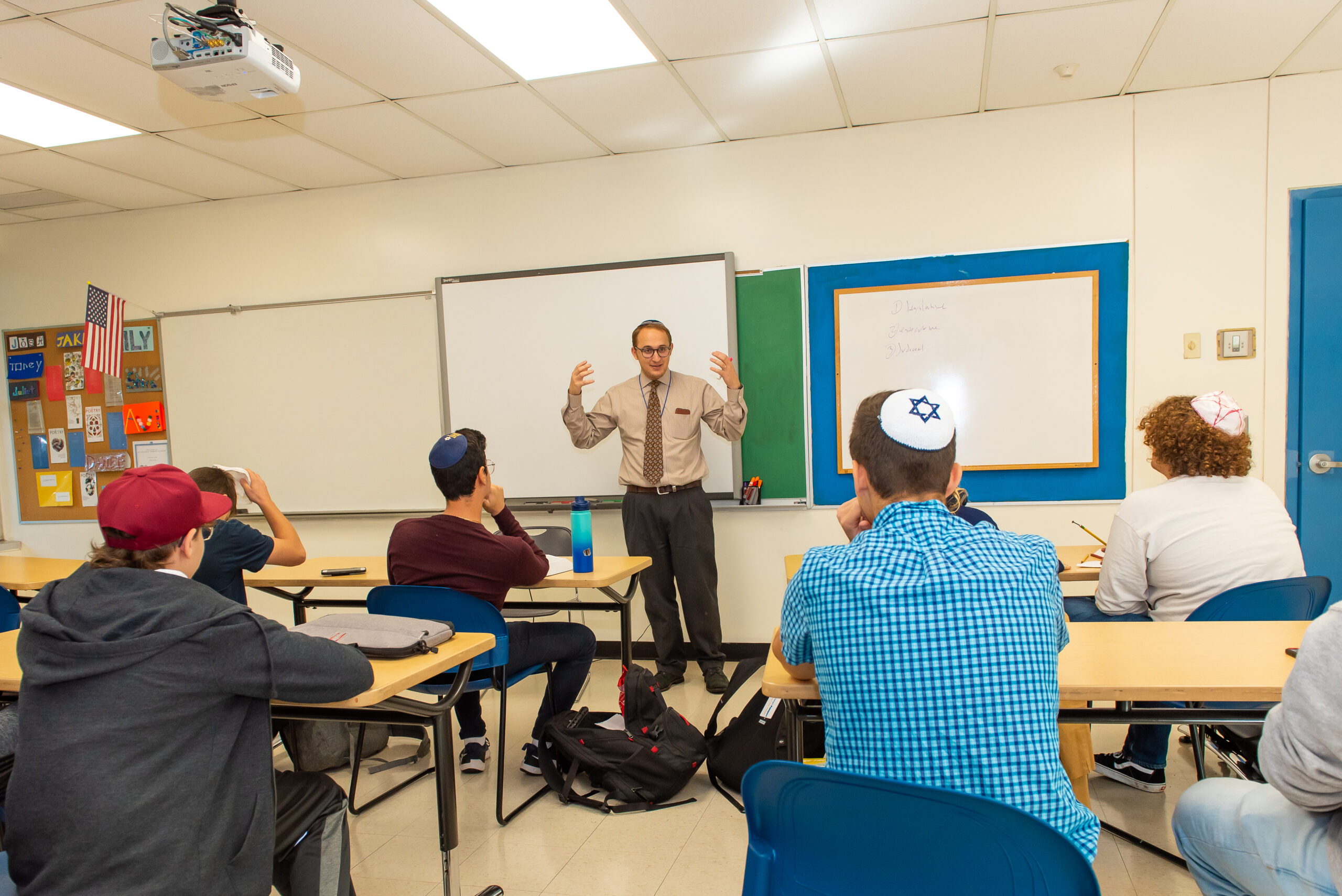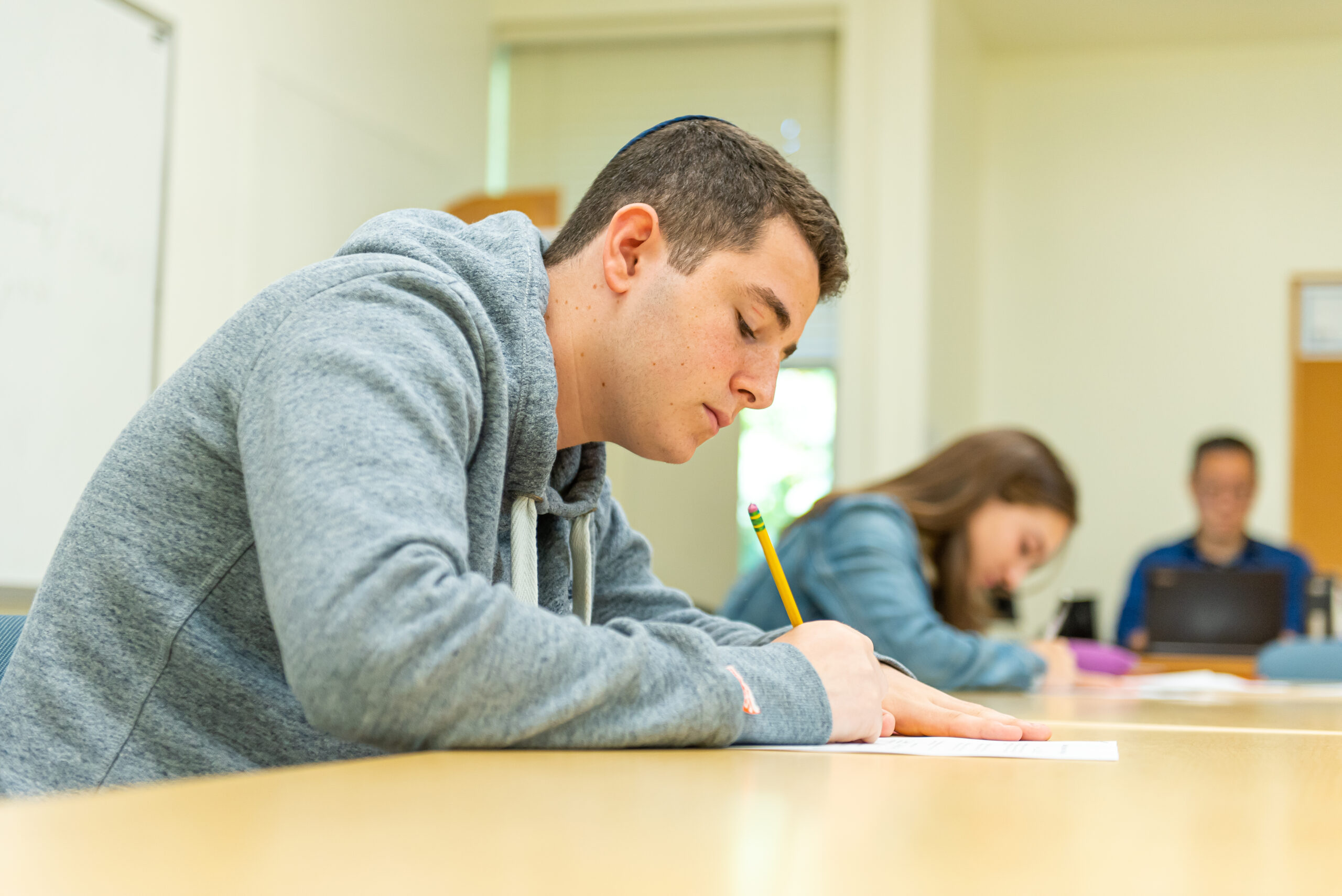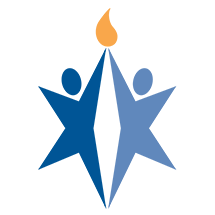
Judaic Core – לימודי קודש
Every student in the Bi-Cultural Hebrew Academy Upper School is learning Torah, at the level appropriate for him or her. Students of all backgrounds and denominations are able to deepen their understanding of our faith and heritage.
Beginner students can take advantage of our Mechina program, comprised of Intro to Jewish Life and Intro to Jewish Text courses prior to joining our regular Tanakh and Talmud classes.

Tanakh
Our Tanakh (Bible) program delineates between the two basic methods through which Torah SheBa’al Peh, Jewish Oral Torah, clarifies the Torah Shebichtav, the Written Torah (e.g., Bible), and brings it to an accessible, human level. The BCHA Upper School four-year curriculum focuses on developing skills to understand and appreciate both of these methods.
The first method is the Midrash Aggadah, the direct approach. In these texts, Chazal, our Rabbis, attempt to elaborate on the stories of the Tanakh and provide motivations for the characters. Chazal use both traditions (Mesorah) and inference (Middot SheHaTorah Nidreshet Bahem, or Drashot) to teach us what the “real take away” from the text is meant to be.
Two years of the BCHA Upper School Chumash four-year curriculum—one during 9th and 10th grades and one during 11th and 12th grades—focus on this method, examining narrative Biblical text through the lens of Chazal. Students will develop an appreciation for and understanding of Midrash Aggadah and the method that yields lessons and values through a great variety of opinion, and often, no final conclusion, or even consensus. Texts studied during the narrative-focused years of study include: Sefer Bereishit; Sefer Shemot, chapters 1 to 18; and Sefer Bamidbar, chapters 10 to 36. The focus of study includes literary analysis, text skills, and personalities. Underclassmen cover Bereishit and Shemot, while upperclassmen learn Bamidbar.


The second method is Midrash Halakha. In these texts, Chazal use both Drashot and Mesorah (often in the form of a Halakha L’Moshe MiSinai, or a direct teaching from Moshe) to put the instructional sections of the Torah into a usable form. The second two years of the BCHA Upper School Chumash curriculum focus on this method, examining legal Biblical text through the lens of Chazal. Students will develop an appreciation for and understanding of the Midrash Halakha, which often contains multiple views, but unlike the Midrash Aggadah, the conclusions are often practical, and therefore there is usually further debate to determine which views should be followed. Texts studied during the halakha-focused years of study include: Sefer Shemot, chapters 19 to 40; Sefer Bamidbar, chapters 1 to 6; and Sefer Devarim. The focus of study includes hermeneutics: close reading, inference/diyyuk, and a working knowledge of Biblical Hebrew grammar. Underclassmen cover Shemot and Bamidbar, while upperclassmen learn Devarim.
Talmud
The Talmud serves as the basis for sophisticated conversation of all aspects of Jewish life, ranging from the rhythms of Jewish ritual to the fundamentals of Jewish theology and the destiny of the Jewish people. Study of Talmud involves decoding and understanding the Mishna, the original outline of Jewish Oral Law, written in Hebrew; the Talmud itself, written in Aramaic, which includes the subsequent Rabbinic discussion of the Oral Law; and the many commentaries and followup discussions written and recorded over thousands of years. Moreover, the Talmudic dialectical tradition, a process which attunes students to close reading and careful detection of logical coherence and fallacy, has long been considered the gold standard of Jewish intellectual attainment. As such, the BCHA Upper School Talmud four-year curriculum offers a range of courses, from the beginner levels to advanced analysis, each of which seeks to engage seriously with the Talmudic text and its import in modern Jewish life.
Students will study Talmudic and Mishnaic texts in their original forms (in Aramaic and Hebrew) and be exposed to a range of topics. Throughout the curriculum, choice of text and mode of instruction is driven by several overlapping goals of the BCHA Talmud program. These include:
- BUILDING BLOCKS OF TEXTUAL COMPREHENSION – How the Torah SheBa’al Peh (the Oral Tradition) uses and complements the Torah Shebichtav (the Written Torah), the development of the Mishna and Gemara, the basic structure of the Mishna as an independent work and the nature of the Talmud as an overlaying commentary on the Mishna, how the Rabbis of the Talmud use logical tools to understand and interpret the Mishna, and the hierarchy of Rabbinic tradition and how that is reflected through ongoing discussion in commentaries and other Rabbinic literature.
- FAMILIARITY WITH BASIC JEWISH CONCEPTS – Such as shabbat and holidays; ethical and interpersonal laws; relationships between Jews and non-Jews; Jewish family life, including the roles of men and women; and relationship between the Jew and God, including prayer.
- THE HALACHIC PROCESS – Including the concept of Machloket (dispute); D’Orayta (Torah law) vs. D’Rabanan (Rabbinic law) vs. Minhag (custom); Psak Halacha (a Rabbinic decision) and how it arises; and extenuating factors, Kula (leniency), and Chumra (stringency).
- TALMUDIC REASONING – including the concept of a limud, including diyuk (inference) and g’zeirah shaveh (analogy based on common words in Torah verses); consistency of rabbinic viewpoints and schools of thought; and extending premises, kal v’chomer (a fortiori) and binyan av (Torah verse or verses serve as a basis for the interpretation of others).
- ANCILLARY GOALS – Such as Rabbinic social and intellectual history and Rabbinic personalities.
The BCHA Talmud program is based on a two-tiered, four-year spiraling curriculum, with each year’s study either teaching, reinforcing, and/or building on the goals outlined above. While the program is goal-oriented, with sugyot (topics/sections) chosen based on attaining those goals most effectively, students will also have the experience of “covering ground” by spending portions of time in specific Messechtot (tractates) and learning directly from the Talmud. Additionally, each year has a broad theme that supports the attainment of program goals . At the higher tiers, there is an enhanced focus on goals #3 and #4, with content chosen to support key areas needed for ongoing advanced Talmud study. At the lower tiers, translation and/or modified texts are used based on the needs of the classroom.
| YEAR | THEMATIC FOCUS | TEXTS STUDIED | HONORS-LEVEL ENHANCEMENTS |
|---|---|---|---|
| 1 or 2 | Tefillah and Synagogue life: focus on concept of sanctity and how to translate sanctity into day-to-day living | Berachot (Perakim 1, 4, 6), Megilla (Perakim 3 and 4) | More specific emphasis on the issues of communal vs. individual practice in Jewish ritual |
| 2 or 1 | Shabbat and Holidays: focus on details of each holiday and utilizing them as a means of connecting to God | Pesachim (Perakim 1, 4, and 10), Megilla (Perek 2) | More in-depth concepts of melacha and additional emphasis on complicating factors (Beitza, Perek 1) |
| 3 or 4 | Individuals’ responsibility in society: including concepts of court system, standards of evidence, and torts | Makkot, Bava Kamma (Perek 8) | Includes Nizkei Mamon and Schirut |
| 4 or 3 | Jewish family life: including Kiddushin and Ketuba | Kiddushin (various) | Includes additional topics such as conversion, milah, and divorce |



